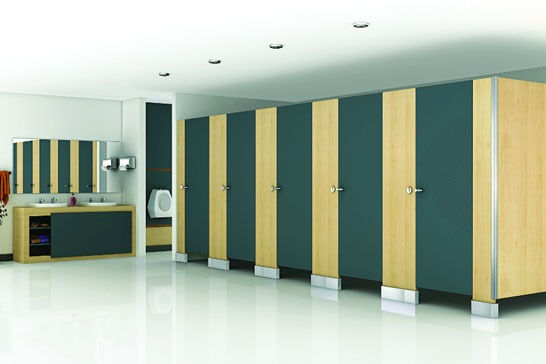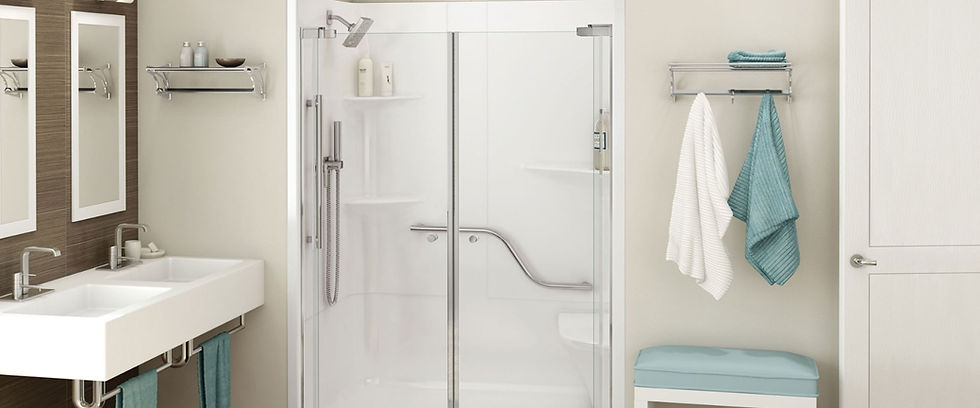Toilet Cubicles: Transforming Spaces with Style and Functionality
- Tanu Adhikari

- Dec 18, 2024
- 3 min read

When it comes to modern restroom design, toilet cubicles have become a cornerstone of innovation. They are no longer merely functional elements; they now serve as key components in creating hygienic, stylish, and efficient restroom environments. From corporate offices to shopping malls, schools to airports, toilet cubicle are redefining the way we think about public and private washrooms. This blog explores the myriad benefits, types, and design considerations that make toilet cubicles an essential feature in contemporary architecture.
The Rising Importance of Toilet Cubicles
Toilet cubicles have evolved significantly over the years, moving beyond basic partitions to become symbols of cleanliness, privacy, and aesthetic appeal. As the focus on hygiene and user comfort grows, businesses and institutions are increasingly investing in high-quality cubicles that enhance user experiences while meeting modern standards of safety and sustainability.
Key Benefits of Toilet Cubicles:
Space Optimization: Modular toilet cubicles allow for efficient use of available space, making them ideal for restrooms with limited square footage.
Enhanced Privacy: Modern cubicle designs ensure complete privacy with full-height panels and gap-free doors, addressing a common concern in public restrooms.
Durability and Maintenance: Made from robust materials like high-pressure laminate (HPL), compact laminate, or stainless steel, toilet cubicles are built to withstand heavy usage and are easy to clean.
Aesthetic Appeal: With customizable designs, colors, and finishes, toilet cubicles can complement the overall decor of any space, creating a cohesive and visually appealing environment.
Cost-Effectiveness: Modular systems are not only easy to install but also cost-effective compared to traditional construction methods.
Types of Toilet Cubicles
Choosing the right type of toilet cubicle depends on the specific needs of the space and its users. Here are the most popular options:
1. Standard Toilet Cubicles:
These are the most common and versatile options, suitable for offices, malls, and schools. They offer a balance of durability and affordability.
2. Shower Cubicles:
Ideal for gyms, swimming pools, and spas, these cubicles are water-resistant and designed to provide privacy in wet areas.
3. Full-Height Cubicles:
Offering maximum privacy, these cubicles are perfect for high-end establishments like luxury hotels or premium office spaces.
4. Kids’ Toilet Cubicles:
Specifically designed for children, these cubicles feature lower doors and vibrant colours to create a child-friendly environment in schools or daycare centers.centres
5. Accessible Cubicles:
Designed to comply with accessibility standards, these cubicles provide sufficient space and features like grab bars, ensuring ease of use for individuals with disabilities.
Materials Used in Toilet Cubicles
The choice of material plays a crucial role in determining the durability, appearance, and maintenance needs of toilet cubicles. Common materials include:
High-Pressure Laminate (HPL): Known for its durability, HPL is resistant to scratches, impact, and moisture, making it a popular choice for high-traffic areas.
Compact Laminate: A thicker and more robust material, compact laminate is ideal for areas exposed to high levels of moisture or vandalism.
Stainless Steel: Sleek and corrosion-resistant, stainless steel cubicles are commonly used in premium restrooms and wet environments.
Glass: Tempered glass cubicles add a touch of luxury and are often used in modern office spaces and boutique hotels.
Design Considerations for Toilet Cubicles
When selecting and designing toilet cubicles, several factors need to be considered to ensure optimal functionality and user satisfaction:
Hygiene: Incorporating materials with anti-bacterial properties and ensuring ease of cleaning is paramount, especially in high-traffic restrooms.
Ventilation: Proper airflow prevents the build-up of odors and ensures a pleasant restroom experience.
Accessibility: Compliance with local accessibility standards is essential to cater to users with diverse needs.
Color and Finish: Neutral tones can create a calming effect, while bold colors can add vibrancy and energy to the space.
Hardware and Accessories: High-quality hinges, locks, and handles are crucial for durability and user convenience.
Sustainability in Toilet Cubicle Design
Sustainability is becoming a top priority in architectural design, and toilet cubicles are no exception. Manufacturers are now using eco-friendly materials and processes to reduce their environmental impact. Recyclable laminates, low-emission adhesives, and water-saving features in adjacent fixtures contribute to greener restroom solutions.
Applications of Toilet Cubicles
Toilet cubicles are used across a wide range of sectors, including:
Commercial Spaces: Offices, shopping malls, and entertainment venues prioritize functionality and design to enhance user experiences.
Educational Institutions: Schools and universities require durable and child-friendly cubicles to withstand frequent use.
Healthcare Facilities: Hospitals and clinics emphasize hygiene and accessibility in their restroom designs.
Hospitality: Hotels and resorts often opt for premium materials and finishes to reflect their brand’s luxury and sophistication.
Conclusion
Toilet cubicles have transcended their utilitarian purpose to become integral to modern restroom design. With their ability to combine style, functionality, and sustainability, they are paving the way for cleaner, more efficient, and aesthetically pleasing spaces. Whether it’s a bustling airport or a serene corporate office, investing in high-quality Toilet Cubicle Manufacturers can elevate the restroom experience for all users.






Comments